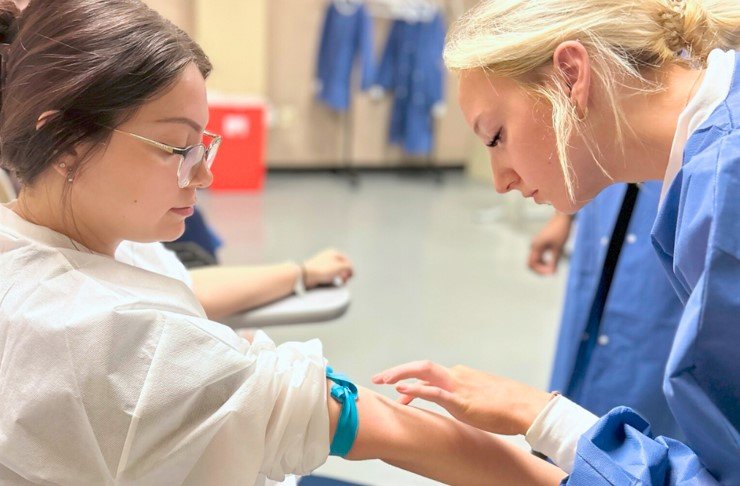The Impact of Automated Specimen Collection Devices on Hospital Efficiency and Patient Care
Summary
- Automated specimen collection devices improve efficiency in phlebotomy services by streamlining the process and reducing human error.
- These devices save time and resources for hospitals by increasing the speed of specimen collection and decreasing the likelihood of sample contamination.
- The use of automated specimen collection devices can lead to improved Patient Satisfaction and better overall outcomes in hospital settings.
Introduction
Efficiency in hospital supply and equipment management is crucial for providing quality patient care while minimizing costs. One area where efficiency can significantly impact hospital operations is in phlebotomy services. The use of automated specimen collection devices has revolutionized the way blood samples are obtained, processed, and analyzed in hospitals across the United States.
Benefits of Automated Specimen Collection Devices
Automated specimen collection devices offer several benefits that can improve the efficiency of phlebotomy services in hospitals:
1. Streamlining the Collection Process
Automated specimen collection devices streamline the blood collection process by guiding Healthcare Providers through each step, from identifying the patient to labeling the sample. This reduces the likelihood of errors and ensures that the right sample is collected from the right patient every time.
2. Improving Turnaround Time
By automating the collection and processing of blood samples, these devices can significantly improve turnaround times for Test Results. This not only benefits patients by providing quicker diagnoses but also allows Healthcare Providers to make timely treatment decisions.
3. Reducing Contamination Risks
Automated specimen collection devices help minimize the risk of sample contamination by ensuring proper handling and storage of samples. This reduces the likelihood of false-positive or false-negative results, leading to more accurate diagnoses and treatment plans.
Impact on Hospital Supply and Equipment Management
The use of automated specimen collection devices can have a significant impact on hospital supply and equipment management:
1. Cost Savings
While the initial investment in automated specimen collection devices may be high, the long-term cost savings can be substantial. These devices can reduce the need for manual labor in phlebotomy services, saving hospitals time and resources in the long run.
2. Improved Inventory Management
Automated specimen collection devices require specific consumables and supplies to operate efficiently. By implementing these devices, hospitals can improve their inventory management practices by ensuring that they have an adequate supply of necessary items on hand.
3. Enhanced Patient Care
Ultimately, the use of automated specimen collection devices leads to enhanced patient care. By streamlining the phlebotomy process and improving turnaround times for Test Results, hospitals can provide quicker diagnoses and treatment plans for patients, leading to better outcomes and higher Patient Satisfaction.
Challenges of Implementing Automated Specimen Collection Devices
While the benefits of automated specimen collection devices are clear, there are some challenges associated with implementing these devices in hospital settings:
1. Cost
One of the main challenges hospitals face when implementing automated specimen collection devices is the initial cost of purchasing and installing these devices. Hospitals must weigh the upfront investment against the long-term cost savings and efficiencies these devices can provide.
2. Training and Education
Healthcare Providers and staff members will need to be trained on how to use automated specimen collection devices effectively. This training can be time-consuming and may require ongoing education to ensure that staff members are using the devices correctly.
3. Integration with Existing Systems
Automated specimen collection devices need to be integrated with existing hospital systems, such as Electronic Health Records and laboratory information systems. Ensuring seamless integration can be a complex process that requires careful planning and coordination.
Conclusion
The use of automated specimen collection devices has a significant impact on the efficiency of phlebotomy services in hospitals. These devices streamline the collection process, improve turnaround times, and reduce contamination risks, leading to better patient care and outcomes. While there are challenges associated with implementing these devices, the benefits they provide far outweigh the initial costs. By investing in automated specimen collection devices, hospitals can improve their supply and equipment management practices and ultimately enhance the quality of care they provide to patients.

Disclaimer: The content provided on this blog is for informational purposes only, reflecting the personal opinions and insights of the author(s) on the topics. The information provided should not be used for diagnosing or treating a health problem or disease, and those seeking personal medical advice should consult with a licensed physician. Always seek the advice of your doctor or other qualified health provider regarding a medical condition. Never disregard professional medical advice or delay in seeking it because of something you have read on this website. If you think you may have a medical emergency, call 911 or go to the nearest emergency room immediately. No physician-patient relationship is created by this web site or its use. No contributors to this web site make any representations, express or implied, with respect to the information provided herein or to its use. While we strive to share accurate and up-to-date information, we cannot guarantee the completeness, reliability, or accuracy of the content. The blog may also include links to external websites and resources for the convenience of our readers. Please note that linking to other sites does not imply endorsement of their content, practices, or services by us. Readers should use their discretion and judgment while exploring any external links and resources mentioned on this blog.
